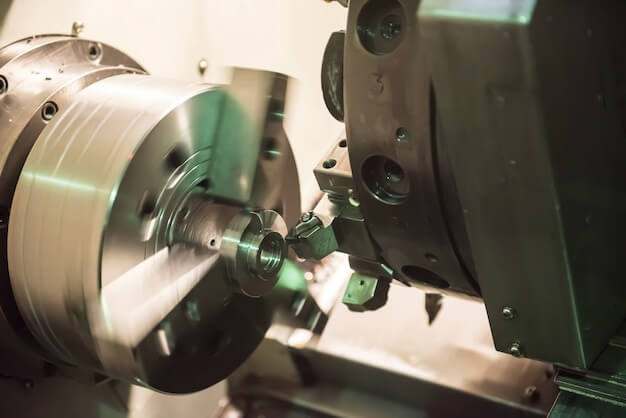Bead blasting, a finishing process widely used in the manufacturing industry, is an integral part of precision Computer Numerical Control (CNC) machining. This article will delve into the intricacies of bead blasting and its pivotal role in enhancing the finish of machine parts.
For those unfamiliar with industry jargon, it’s necessary to clarify that bead blasting refers not to crafting decorative trinkets, but it is one specialized type of abrasive blasting process used in manufacturing industries. It’s known for delivering consistently uniform surface finishes on critical mechanical components, and hence plays an indispensable part in many industrial applications, including CNC machining.
The procedure uses tiny spherical beads composed mainly of glass or ceramic propelled at high speeds towards the workpiece under processing. These acts like a massive array of miniature hammers etching away the residue, paint, oxide coating, or any undesired material from the component’s surface promoting purity and uniformity.
In the context of CNC machining, which includes milling, turning, routing, and other subtractive manufacturing technologies designed to shape raw materials precisely, bead blasting emerges as an essential post-machining method. By using mechanically or electronically controlled equipment, CNC machines transform 3D digital models into tangible elements made of plastic or metal.
Just how does bead blasting fit into this pool? Here’s a step-by-step guide:
1. Design & Modeling: In the first stage of CNC machining, manufacturers design the model using CAD (Computer-Aided Design) software. After designing, they transfer these files to a CNC machine through CAM (Computer-Aided Manufacturing) programming codes.
2. Pre-Machining Setup: After checking the blueprint of the project, operators mount the appropriate size and type of raw material block onto the machine carefully. They then fix the required cutting tool in place before positioning the axis properly.
3. CNC Machining: The controller interprets the CAM program’s codes and triggers work-station operations. According to the instructions, it then engages in a round of subtractive machining to etch away the unneeded material from the block.
4. Bead Blasting: Post-machining, often components may still have rough edges or burrs on their surfaces, affecting their final functionality and appearance. Here is where bead blasting showcases its power. Using compressed air or mechanical methods, operators blast small beads onto the parts at high velocity, which erodes unnecessary protrusions, leaving behind a smooth and clean finish apart from providing an added layer of protection against corrosion.
5. Final Inspection: After bead blasting, a close inspection checks if the part fulfils all the design requirements accurately. This visual and tactile examination ensures that all details are perfect, confirming excellent product quality.
In most cases, the CNC machining process is incomplete without high-quality finishing options like bead blasting. It provides manufacturers with the ability to deliver products that meet strict tolerances while maintaining aesthetic integrity, thus enhancing both performance and client satisfaction.
It’s crucial to note though – as much impressive as bead blasting appears, effective execution requires extensive knowledge about types of pearls, pressure settings, standoff distance, angle of attack etc. Wrong selection may inadvertently damage the component surface instead of refining it.
To leverage this method effectively, partnering with a CNC service provider experienced in advanced manufacturing techniques becomes vital. Such experts can guide you through each step, ensuring your projects are optimized for superior results with minimal lead time or cost.
In conclusion, bead blasting in CNC machining isn’t merely a luxury; it’s a necessity when detailed precision, professional aesthetics, and long-lasting durability are sought. Its ability to provide a noteworthy surface finish extends beyond cosmetic appeal, significantly impacting the component efficiency and overall project success rate.
Other Articles You Might Enjoy
- Choosing Between 304 and 316 Stainless Steel for CNC Machining Applications
Introduction to 304 and 316 Stainless Steel in CNC Machining Applications The selection of the right grade of stainless steel is vital in Computer Numeric Control (CNC) machining applications. Here,…
- Exploring Bead Blasting in CNC Machining(tac welding Victoria)
CNC machining stands for Computer Numeric Control, which is a manufacturing process where pre-programmed computer software dictates the movement of factory tools and machinery. This method can be used to…
- Exploring Bead Blasting in CNC Machining(tac welding Cora)
Bead blasting is an integral process within computer numerical control (CNC) machining that sees extensive usage across various industries because of its ability to create high-quality finishes. Fellows of the…









